Вы здесь
Independence Monument of Republic Kazakhstan.
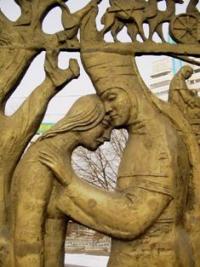

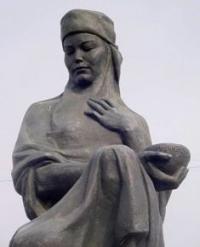
Tours Almaty.
“Bloodthirsty Cyrus! Do not be proud of your feat - the fruit of the vine, which also drives you insane when wine rushes to your head ... Now, listen to my good advice now: betray my son and leave my land with good health ... If you will not do this, then I swear to you by the god of the sun, the ruler of the Massagetae, I will really give you blood to drink, no matter how insatiable you are."
Queen Tomiris.
Visiting monuments Almaty.
The Independence Monument of the Republic of Kazakhstan is located in the northern part of the Republic Square in the city of Almaty between houses No. 13 and 15 on Satpayev Street, opposite the city akimat.
The idea of creating the Independence Monument was first suggested to us by Nursultan Abishevich Nazarbayev, in 1993 we visited Egypt as part of a government delegation. The President drew our attention to a lonely standing obelisk of graceful form, all covered with inscriptions, and told me:
“Shota Edrisovich! Why don't we build something like this at home in honor of Kazakhstan's independence. Think! " Upon arrival to my homeland, I organized a creative group of very talented young architects and sculptors, graduates of the St. Petersburg Academy of Arts, Moscow, Almaty architectural and art universities.
We have been studying the world experience in the construction of such monuments for a long time, wishing to find our own way. Italian architecture of the 16th century "discovered" two types of monuments - a column and a triumphal arch.
The Column of Emperor Trajan in Rome, the Vendome Column in Paris, the Alexandrian Column in St. Petersburg, Nelson's Column in Trafalgar Square in London - all were built by the same method, namely, the column was taken from the Greco-Roman order system (Doric, Ionic or Corinthian) with a capital and a sculpture was erected on it.
We tried to rely more on the connection with folk art, primordially established traditions. Often, on the top of the Kazakh lands, in the highlands, verticals of syntases, kulpytases or stone statues of warriors or female figures can be seen from afar.
Thanks to the skill of stone carvers, the architectural and artistic forms of these verticals look woven from bizarre patterns, sometimes they are covered with signs (tamga) or inscriptions that carry certain information. Every ornament, drawing or sign is full of meaning or allegory.
Based on the practice of creating monuments, both in the West and in the East, in the process of persistent search for an original, rather original solution, six versions of the Monument were developed. They were repeatedly considered in the relevant authorities, when, finally, on July 5, 1994, the President and members of the government of the Republic of Kazakhstan approved one of the last options. On July 1, 1995, President N. Nazarbayev issued a decree “On the construction of the Independence Monument in Almaty”.
The Independence Monument of the Republic of Kazakhstan was installed in Almaty on Republic Square, at the intersection of Baiseitova and Satpayev streets. The complex is a work of art that synthesizes architecture, sculpture, texts of sayings of prominent figures of science, culture and state.
The peculiarities of this very important town-planning unit: the shape of the site, the relief, the nature of the surrounding architecture gave flesh and blood to the complex, enhanced the originality and originality of its compositional construction.
The exposition of the space of the monument is stretched horizontally for 180 meters. The center of the composition is a vertical plastic stele, reminiscent of relief Mangyshlak kulpytases and having a height of 28 m. It ends with a sculpture of the "Golden Man" 6 m high - a ruler who, while standing, controls a winged leopard and symbolizes solid state power in the land of the Kazakhs.
This image was recreated on the basis of a study of specific archaeological finds in the Issyk burial mound near Almaty, where the sovereign of the Saks (VIII - IV centuries BC) was buried in ceremonial clothes with regalia and attributes of the supreme power.
(The style of clothing, gold jewelry on it are masterpieces of world art, inspired works of human genius). The stele is installed on a semicircular stylobate with a diameter of 28 meters, which is placed in the center of a paved round platform with a diameter of 46 meters, fixing a certain point in space. Positioned against the background of two high-rise buildings, it does not merge with the background, it is not absorbed by it due to the precisely measured distance between them.
The vertical of the stele belongs to the space, not the buildings. The closer we come to it, the sharper and more dynamic it rushes into the sky. At the foot of the stele, on the stylobate, there is a sculptural group consisting of allegorical figures: "Sage-Heaven", "Mother Earth" and two children on foals.
Children-riders symbolize the youth and great future of our Republic, they are, as it were, preparing to participate in "competitions" to master universal human values. on the other hand, father, mother and children make up the family - the basis of the state and the extension of the human race.
These figures fit into a square that represents stability and strength. On both sides of the stele, at a distance of eighteen meters from it, ten relief-sculptural walls are placed in a horseshoe-shaped circle, alternating with an inscription and viewed from both sides.
These walls are like a diadem, they carry an artistic and semantic load, giving the whole complex meaning. They reflect historical themes from ancient times to the present day: the formation of the state, the defense of the Fatherland, the years of great disasters, national liberation movements, the world war, the December events of 1986, the proclamation of independence, etc.
Of course, it is not the chronological order of events that takes place here, but the artistic and plastic expression of its individual bright stages. The number of walls “was not chosen by chance. According to Pythagoras, the number 10 is the greatest number, it encompasses all arithmetic and geometric proportions, and at the same time symbolizes strength, faith, and the power of memory. Numerous residents of Almaty often turn to me to give a detailed explanation of the reliefs, which I do with pleasure.
Relief 1. The relief reflects the era of Tomiris - the queen of the Massaget Sakas - the ancient ancestors of the Kazakhs. As the "father of history" Herodotus told, the Persians, led by King Cyrus, entered the Massaget lands.
They fraudulently interrupt part of the Massagetae troops, take prisoner the son of the queen Tomiris - the leader of the Massagets, named Sparganis. And the queen, having learned about the fate of her army and her son, sends a messenger to Cyrus with the words: “Bloodthirsty Cyrus! Do not be proud of your feat - the fruit of the vine, which also drives you insane when wine rushes to your head... Now, listen to my good advice now: betray my son and leave my land with good health...
If you will not do this, then I swear to you by the god of the sun, the ruler of the Massagetae, I will really give you blood to drink, no matter how insatiable you are. " Tomiris fought, where almost the entire Persian army fell. Having found the body of Cyrus among the fallen, she orders him to stick his head into a fur filled with blood, thereby realizing her word.
Tomiris is depicted in relief on a chariot at the moment of victory. Decorations, robes and other attributes of the Saka culture that have come down to us as a result of archaeological excavations are used here.
Relief 2. The era of Al-Farabi is depicted, in which many sciences developed: astronomy, philosophy, medicine, etc. Next to the figure of Al-Farabi is depicted another son of the Kazakh land - the historian Mohamed-Haydar Dulati. Sitting below Korkut-ata with kobyz, the founder of Kazakh music.
The legend about the origin of the Turkic peoples from the heavenly wolf is reflected in the lower left corner.
Relief 3. Dedicated to the formation of the Kazakh Khanate in the XVth century. The founders of the khanate were khans: Az-Zhanibek and Kirey.
Relief 4. The saddest period in the history of the Kazakh people is reflected in 1723 from the sudden invasion of Kalmyks, Kazakh villages were plundered, about a million people died, many were taken prisoner. This year in history is considered the year of the "great tribulation". The sad song "Elim-ai" ("Oh, my homeland") about that time is sung to this day.
Relief 5. There is depicted a duel between the young Abylai Khan and the Kalmyk noyon Sharysh, where the first came out the winner. From that day on, the people rose to defend their homeland.
Relief 6. Russia and Kazakhstan. Friendship of great people - F.M. Dostoevsky, Ch. Ch. Valikhanov, T.G. Shevchenko. Abay and Birzhan are also depicted. The relief uses a drawing by T.G. Shevchenko, which reflects the punishment of a soldier with gauntlets. The relief is dedicated to the memory of the great sons of Russia and Ukraine, who were exiled to Kazakhstan during the tsarist years.
Relief 7. In Kazakhstan, there have been many uprisings against the regime of violence and oppression. They were brutally suppressed. One of the episodes of these performances, where the leader was Sultan Sadyk, the son of Kenesary, is reflected in this relief. According to eyewitnesses: “When Sultan Sadyk, walking in front with a banner, brought his horsemen very close to the lines of fire, the attackers fired a volley of three hundred rifles.
The first row was spread out in place, while the back rows fell to the ground. Only Sultan Sadyk, with a banner in his hand, stood for an hour a hundred paces from the line of fire. The soldiers fired at him so fiercely that the canvas of the banner was perforated like a sieve, there was no place left in it. But God saved Sultan Sadyk unharmed."
Relief 8. The relief is dedicated to the Second World War. The center of the composition is the figure of General Panfilov and Colonel Bauyrzhan Momyshuly. In the right compartment, Aliya Moldagulova is depicted at the time of her mortal wound. The participation of women in the war is a great tragedy.
They should love and be loved, continue the human race, give life, and they die on the battlefield... The left compartment reflects the years of repression. The intellectual forces of the nation are behind bars: Alikhan Bukeikhanov, Akhmet Baitursunov, Magzhan Zhumabaev. The scene of the execution is also given.
Relief 9. The theme of the relief is the December events of 1986. Youth performance with political.
Relief 10. The proclamation of independence of Kazakhstan, speech and oath of the first president of the Republic N.A. Nazarbayev are depicted.
On the reverse side of the relief there is a map of the country, which depicts architectural monuments - the mausoleums of Khoja Ahmed Yassavi, Alashakhan, Aisha-Bibi, etc. Small architectural forms: benches, granite blocks for inscriptions, lamps, spotlights, as well as flower beds are placed on both sides of the central large circle. Samples of petroglyphs and monuments of ancient Türkic writing found in the vastness of our country are carved on the inclined planes of six granite blocks.
The absolute dimensions of the Monument, its volumetric structure, proportional structure and style were chosen in accordance with the conditions of perception, proportionality to the scale of the square and the person in the proportions of the whole and parts of the complex, harmonious proportions are provided. Applicable materials: granite, bronze and concrete. The authors of the project have fully preserved the already existing fountains and small architectural forms along the Baiseitova street.
From time immemorial, the Kazakhs have a custom to touch national shrines with their hand. Considering this ritual, at the foot of the stele we placed an open book with a trace of a palm, on the left side of the book there is an ancient Turkic inscription (in Kazakh, Russian and English):
"Sech avyn" - "Choose and be bliss!" You can choose a friend, bride, groom, life path, if you wish. I do not know if we have guessed the wishes of the people? I think about all this every time I see a wedding cortege stop at the Monument and young people put their hand to the book.
The monument was installed at the initiative and sovereign will of the President of the Republic of Kazakhstan Nursultan Abishevich Nazarbayev. At the level of human eyes, aphorisms are engraved in large letters on kulpytases in the Kazakh and Russian languages (cuneiform) - sayings of famous historical figures of the past and present.
Here you can also read the following statement of the President of the Republic of Kazakhstan N. Nazarbayev: “Only peace and the consent of society ensure the right of every person to a decent life and work. Freedom is not self-will, but the triumph of justice and law...”.
On December 16, 1996, the grand opening of the "Independence" monument took place. On September 26, 2001, at the 12th session of the Maslikhat of the city of Almaty of the II convocation, a decision was made № 154 on giving the monument "Independence" a monument of monumental art of local importance.
Its authors: Shota Valikhanov - head of the creative team; Adilet Zhumabaev, Nurlan Dalbaev, Kairat Sura-nchiev - sculptors; Kazybek Zharylgapov is an architect. Co-authors: Kaldybai Montakhaev - architect; Murat Mansurov, Azat Bayarlin, Kazybek Satybaldin are sculptors.
Geographic coordinates of the monument of Independence of the Republic of Kazakhstan in Almaty: N43 ° 14'18.75 "E76 ° 56'43.55"
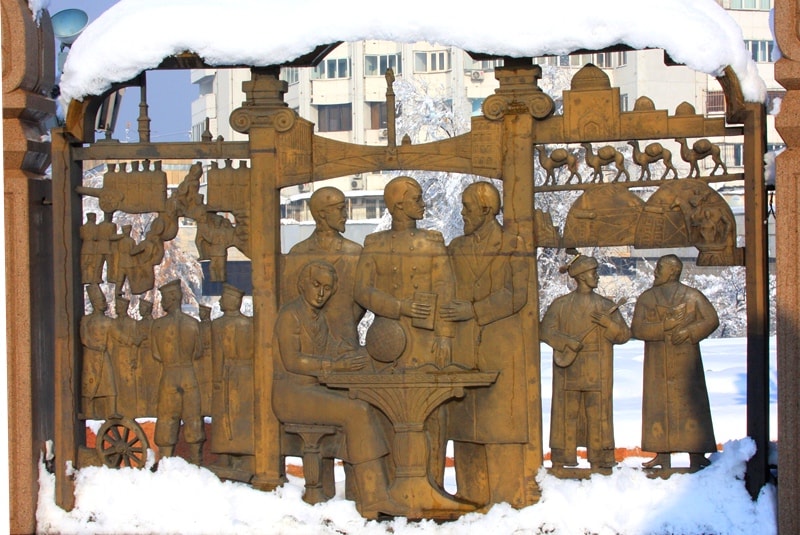
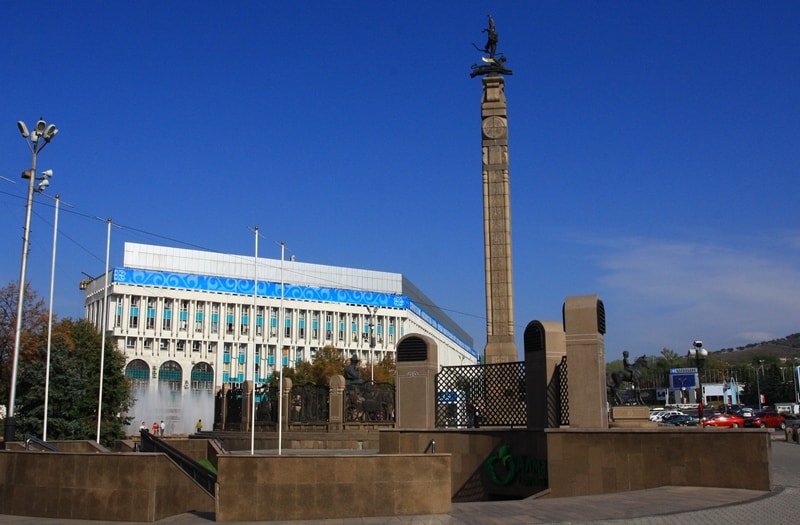
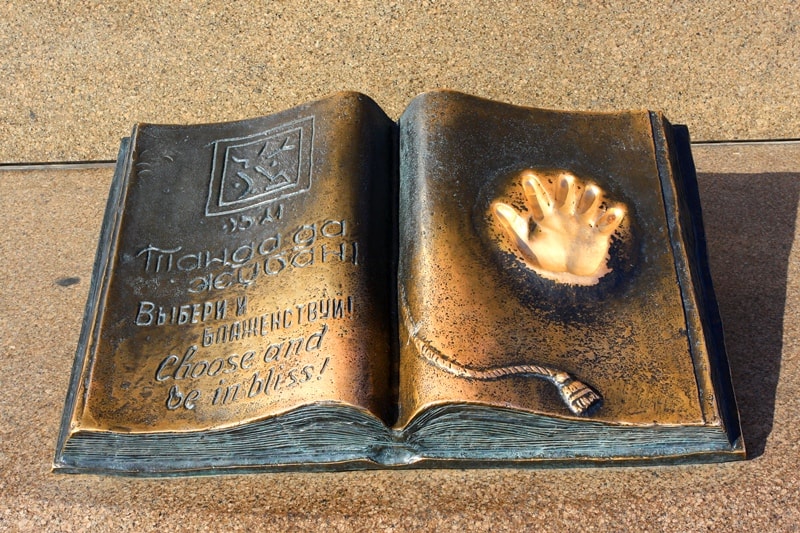

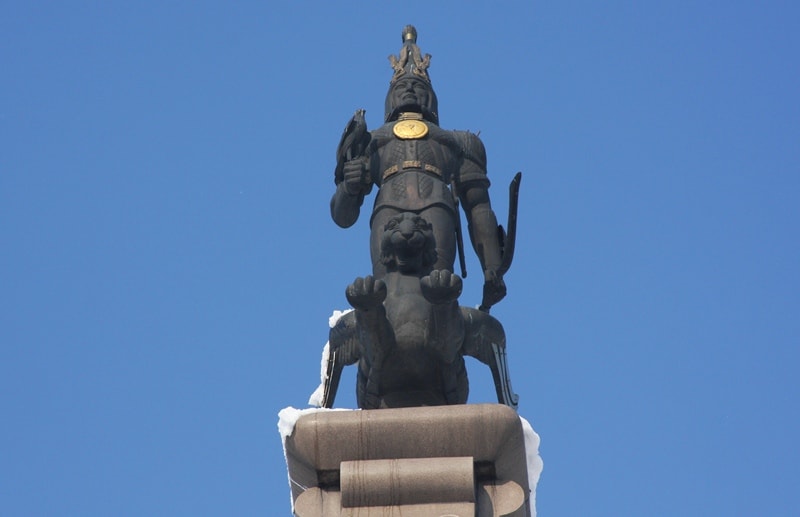
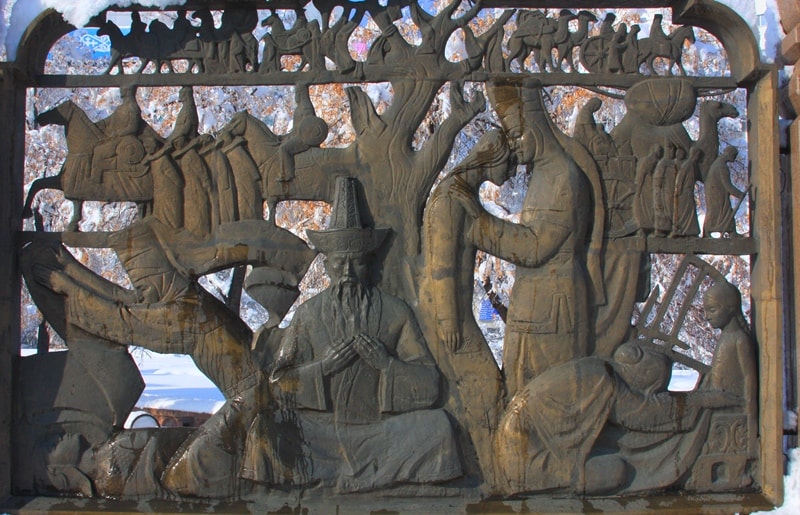
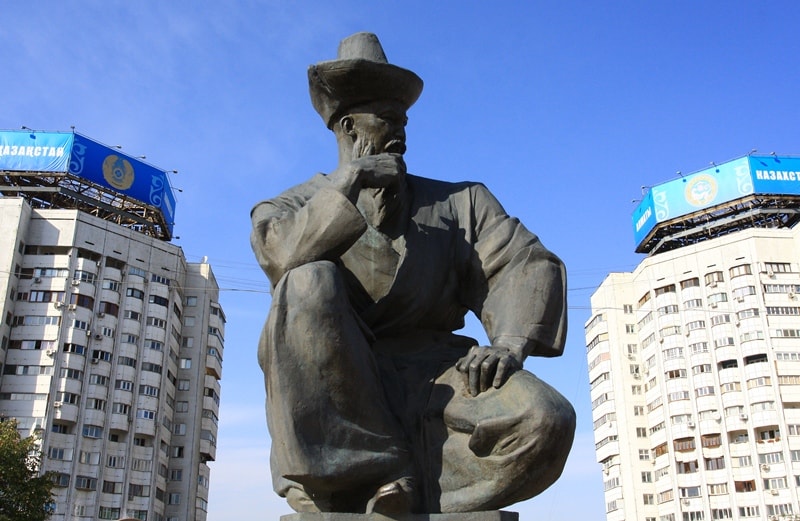

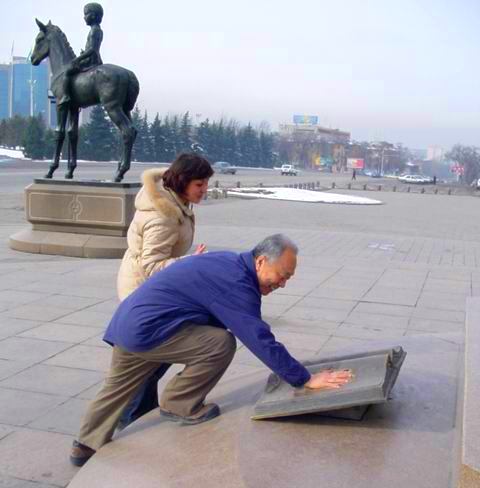
Authority:
Sh. Valikhanov.
Photos by
Alexander Petrov.







